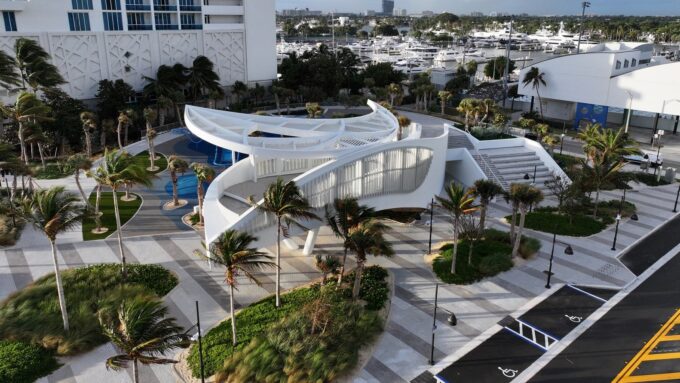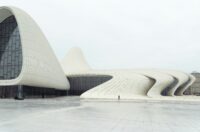- Home
- Articles
- Architectural Portfolio
- Architectral Presentation
- Inspirational Stories
- Architecture News
- Visualization
- BIM Industry
- Facade Design
- Parametric Design
- Career
- Landscape Architecture
- Construction
- Artificial Intelligence
- Sketching
- Design Softwares
- Diagrams
- Writing
- Architectural Tips
- Sustainability
- Courses
- Concept
- Technology
- History & Heritage
- Future of Architecture
- Guides & How-To
- Art & Culture
- Projects
- Interior Design
- Competitions
- Jobs
- Store
- Tools
- More
- Home
- Articles
- Architectural Portfolio
- Architectral Presentation
- Inspirational Stories
- Architecture News
- Visualization
- BIM Industry
- Facade Design
- Parametric Design
- Career
- Landscape Architecture
- Construction
- Artificial Intelligence
- Sketching
- Design Softwares
- Diagrams
- Writing
- Architectural Tips
- Sustainability
- Courses
- Concept
- Technology
- History & Heritage
- Future of Architecture
- Guides & How-To
- Art & Culture
- Projects
- Interior Design
- Competitions
- Jobs
- Store
- Tools
- More
The Evolution of Italian Architecture Through the Centuries

Italian architecture is packed with passion, reinvention, and rustic crumbling facades… kind of like a never-ending drama series! Italy has been a leader in architectural innovation for millennia, from the ancient Roman days to the sustainable and elegant designs of modern times. Something evident in Italy’s architecture is that each era was shaped by a variety of things, such as political power struggles, religious movements, and even war.
Italy’s architectural evolution tells a story. A story is of ambition, adaptability, and artistry. All of this can be seen in thousands of years-old aqueducts, gravity-defying Renaissance domes, and even modern eco-friendly structures. 27 BC – 180 AD Rome was actually responsible for some of the most influential architectural innovations still used today.
If you’re interested in Italian architecture, let’s take a journey through the ages.
Table of Contents
ToggleAncient Rome: Bigger, Bolder, Better
It goes without saying that the Romans weren’t mere builders. They were engineers of entire civilizations. They seemed to only find worth in constructing extravagant structures that were built to last. Consider, for example, The Colosseum, a marvel of structural engineering, and the Pantheon is the world’s largest unreinforced concrete dome. The Appian Way – once an ancient highway, is now a UNESCO World Heritage Site.
The Romans set the stage for every architectural movement that followed it by pioneering concrete, the arch, and even complex water systems. These innovations laid the groundwork for significant future advancements.
Cultural and Political Influence: Rome’s architecture was about aesthetics but also about power. Buildings were a sign of power and might, so it comes as no surprise that emperors built roads, aqueducts, and public spaces to showcase their dominance.
Technological Leap: When the Romans developed concrete, so much more became possible in terms of construction. Now, it was possible to create vast open spaces!
Global Impact: Roman architectural principles became the blueprint for Western civilization. They influenced everything from Washington, D.C.’s neoclassical buildings to modern-day stadiums.
Medieval & Gothic: The Age of Height and Holiness
After the fall of Rome, things became a little unsettled. Architecture truly reflected Italy’s fragmentation. Fortress-like churches with thick walls and small windows, such as the Basilica di San Miniato al Monte in Florence, emerged during the Romanesque period (9th–12th century).
Then came the Gothic era (12th–16th century). The era is defined by architects’ decision that taller structures meant closer to God. A fine example of this is the Milan Cathedral. Note its sky-high spires and intricate detailing. Flying buttresses, stained glass, and pointed arches became the rage, which seemed to blend faith and artistry. This shift marked a profound transformation in architectural design and thinking.
Cultural and Political Influence: The Catholic Church was the dominant force at the time. It was unusual to find the church funding elaborate cathedrals as symbols of religious and political power.
Technological Leap: Innovations in engineering allowed for thinner walls and taller buildings. These new designs let more light in and created a sense of divine space.
Global Impact: The Gothic style spread across Europe. When it reached Italy, architects put their own spin on it. They blended classical elements with new structural advancements, and it worked!

The Renaissance: Beauty, Balance, and Big Names
Italian architecture looked to the past days of Rome and Greece again in the 15th century, which saw the dawn of the Renaissance. This era was marked by humanistic ideals, harmony, and symmetry, and so Filippo Brunelleschi’s massive dome in Florence was born. Interestingly enough, the dome has been struck by lightning at least 27 times! Thereafter, villas designed by Andrea Palladio became the norm for European architecture. This period of revival set the stage for groundbreaking changes in architecture and design.
Cultural and Political Influence: The Renaissance was fueled by intellectual curiosity and patronage from powerful families (looking at you, Medici). Architecture saw a renewed appreciation for mathematical precision in design.
Technological Leap: The revival of classical orders (Doric, Ionic, Corinthian) combined with advances in perspective led to revolutionary city planning.
Global Impact: Palladio’s designs directly influenced neoclassical buildings worldwide, including the White House and even British country estates.
Baroque & Rococo: The Extra Phase
The 17th and 18th centuries brought the dramatic designs, curved facades, and intricate gold detailing of the Baroque era. Gian Lorenzo Bernini basically sculpted Rome. Creations included fountains and churches. At the same time, Francesco Borromini twisted classical elements into expressive, almost theatrical compositions.
Rococo, Baroque’s younger and even flashier cousin, took ornamentation to new levels. It’s interesting to note that Italy, unlike France, never fully embraced the style, but it left a lasting influence.
Cultural and Political Influence: The Catholic Church used Baroque architecture to inspire faith and awe. Aristocrats flaunted their never-ending wealth in the form of elaborate palaces.
Technological Leap: Improved engineering allowed more to be done, which meant larger domes, sweeping staircases, and theatrical spaces. These designs played with light and shadow.
Global Impact: The Baroque style spread across Europe and Latin America. It left its mark on churches, palaces, and modern luxury designs.
Modernism & Sustainability: Tradition Meets Innovation
Fast-forward to the 20th and 21st centuries, when Italian architecture takes a sharp turn toward minimalism, functionality, and sustainability. Rationalist architects like Giuseppe Terragni embraced clean lines and geometric forms, while modern designers balance innovation with Italy’s rich history.
Today, sustainability is at the forefront. From green rooftops in Milan’s Bosco Verticale to adaptive reuse projects that breathe new life into ancient buildings, Italy is proving that old and new can coexist beautifully, a defining feature of Italy’s architectural landscape.
Cultural and Political Influence: Italy’s commitment to heritage conservation means architects must blend modern needs with historical integrity.
Technological Leap: Eco-friendly materials, energy-efficient buildings, and 3D printing are pushing Italian architecture into the future.
Global Impact: Italy continues to set trends in urban planning and sustainable architecture, influencing cities worldwide.
The Best Way to Experience Italy’s Architectural Wonders
One of the best ways to explore Italy’s architectural marvels is to see them in person. It might mean hopping from Roman ruins to Renaissance palaces to modern green spaces all in a single trip but armed with an eSIM plan for Italy to keep you connected and able to access online maps, book tickets, and look up obscure architectural facts on the go, you can easily navigate your way and explore all that’s to offer.
Italian architecture isn’t just about buildings; it’s about storytelling, innovation, and cultural evolution. Whether you’re marveling at the Pantheon’s perfect dome or admiring a sleek, modern eco-structure, each structure is a testament to Italy’s unwavering architectural legacy.
A few centuries from now, future architects might study today’s designs, wondering how we ever lived without self-sustaining skyscrapers and AI-driven city planning. But for now, Italy remains the eternal blueprint for architectural greatness.
illustrarch is your daily dose of architecture. Leading community designed for all lovers of illustration and #drawing.
Submit your architectural projects
Follow these steps for submission your project. Submission FormLatest Posts
3D Printed Homes: Time, Cost, and What to Expect
3D printed homes explained: realistic timelines (24–72h walls, 8–16 weeks total), true...
How a Contact Centre Boosts Trust in Your Building Business
In construction, trust is the glue that holds projects together. Clients need...
How Real Time Parcel Geolocation Is Redefining Last Mile Efficiency for Modern Businesses
Last mile delivery has become the most critical point in the customer...
How Can Small Spaces Stay Stylish and Relaxing?
In today’s fast-paced urban lifestyle, small living spaces are becoming increasingly common....












Leave a comment